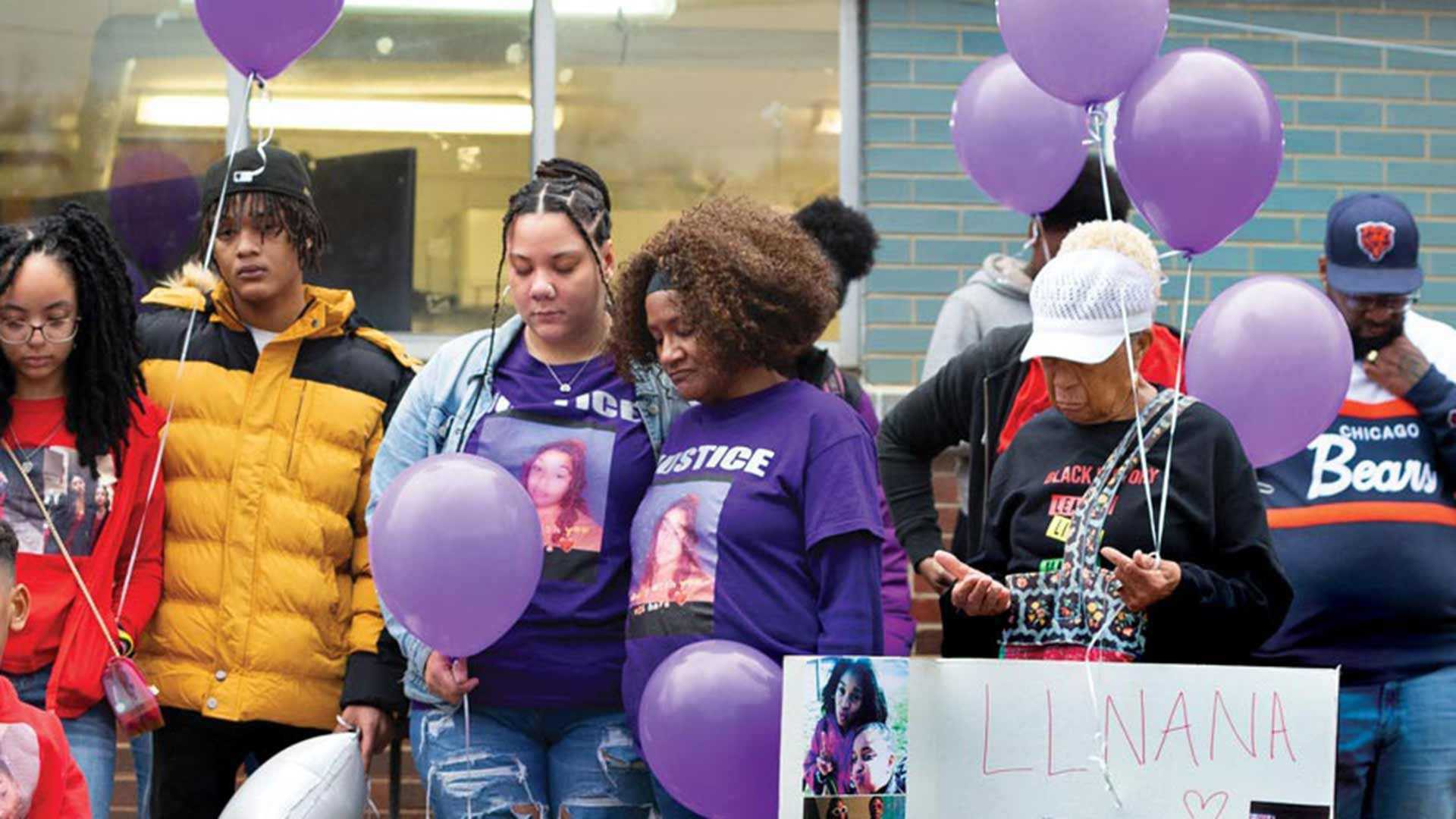- June 07, 2023
- By Sala Levin ’10
ONE EVENING IN FEBRUARY 2021, Janaria Muhammad stepped out of her house in Knoxville, Tenn., to meet friends at her favorite restaurant, Kings and Wings. Recently turned 15, Nana, as everyone called her, was a perpetual source of energy for those around her. She reminded her brothers to keep their grades up, helped her dad navigate new technology so much that he teased she was his secretary, shimmied with the dance team at Austin-East High School, and babysat neighborhood kids and cut hair for pocket money.
“She was like the sun,” her father, Lawrence Muhammad, told The Washington Post. “When you saw her, you lit up.”
That night, Nana didn’t make it past her yard on Selma Avenue before the darkness got her: She was hit twice by a drive-by shooter. Her father rushed outside and held her as she died—the third of five Austin-East students lost to gun violence before the end of spring.
To mark the second anniversary of Nana’s murder, dozens gathered outside the squat brick building that houses East Knoxville’s YWCA Phyllis Wheatley Center, where she regularly came after school to do homework, play basketball and snap pictures with friends. Friends and relatives, along with community members and leaders, clutched purple balloons—the color she’d chosen for her bedroom—under a gray, oatmeal-textured sky.
Her parents spoke to news cameras, pleading again for help finding her still-unidentified killer. “If we don’t get justice in this life, we know that we will get justice in the next,” said Jacquelinne Muhammad, Nana’s mother.
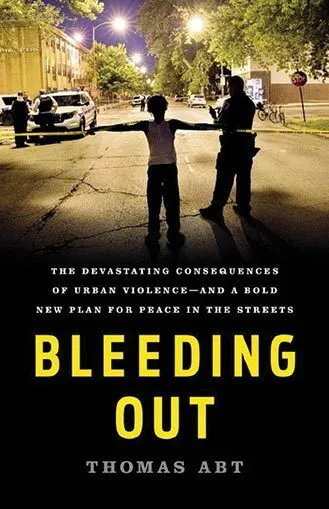
Confronted with 40 other homicides that year and desperate to lead her city to a safer future, Knoxville Mayor Indya Kincannon picked up a book that promised a straightforward approach to reducing gun crime: “Bleeding Out: The Devastating Consequences of Urban Violence—And a Bold New Plan for Peace.”
In it, author Thomas Abt, a University of Maryland associate research professor, delivers a set of evidence-based action items: focus a range of prevention efforts on those likeliest to be perpetrators or victims; keep a closer eye on areas likeliest to experience violence; and employ people who know the world of street violence intimately to act as
mediators.
As Kincannon read the book, she was struck by the feeling that “it was written for mayors,” she says. “It’s research-based, but it’s also very, very practical.” She emailed Abt to ask him more about his ideas, laying the groundwork for what’s becoming a central part of the city’s anti-violence strategy.
Knoxville is the first city to partner with Abt’s Center for the Study and Practice of Violence Reduction, or VRC. Formed shortly after his arrival at UMD’s Department of Criminology and Criminal Justice, the center, funded partly by the private philanthropy organization Arnold Ventures, seeks to conduct research on minimizing gun violence, and to offer its expertise for free to municipalities around the country. Partnerships with other cities, including Boston, are in the works.
“The mission is very simple,” says Abt. “We want to save lives by stopping violence, using science. As we measure our progress, that will be the question: Have we saved lives?”
KNOXVILLE POLICE OFFICER Conner Wiesenberg has the kind of “how’s your dad doing?” familiarity with neighborhood regulars that Abt prizes, because it opens doors for peaceful solutions to problems that could escalate to bullets flying. He graduated from Knoxville Central High, and played on its basketball team with kids from Lonsdale, a neighborhood that experienced violence then, too. “It would not be uncommon for us to be on a traffic stop and somebody rolls by, calls my name out, it’s somebody that I know,” he says.
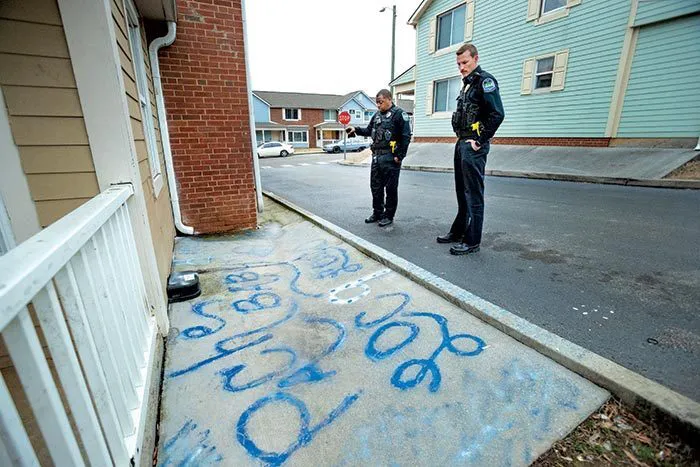
On foot patrol one bone-chilling February evening in Lonsdale Homes, a subsidized housing community, Wiesenberg and his partner, Andrell Cummings, point out a small square of pavement where someone has spray-painted a design, including the word “Pache,” the nickname of a neighborhood resident accidentally shot and killed last May during a dispute he’d been trying to defuse.
Knoxville and cities around America are increasingly littered with symbols of tragedy. In 2020, amid a pandemic, political toxicity and civic upheaval, the U.S. reached a startling new peak: 79% of murders involved a gun, the highest since at least 1968, according to the Pew Research Center. Other numbers also painted an unsettling picture: In 2021, the nonprofit Gun Violence Archive recorded the most gun deaths, 45,107, since its 2013 founding.
While suicides and domestic violence make up a significant number of gun deaths, Abt’s focus is urban or community violence, defined in “Bleeding Out” as occurring “outside the home, on the streets or in other public spaces where people congregate.” Muggings gone too far, gang rivalries, personal disputes that play out in parking lots or on street corners—those are his terrain.
Knoxville, a hilly city of roughly 190,000, outstrips most other U.S. cities of its size in rising violence. In 2022, its homicide rate was 21.4 per 100,000, more than double in 2018 and roughly triple 2022’s national rate. While U.S. cities saw a 30% increase in homicides from 2019 to 2020, Knoxville’s surged 68%.
In 2022, Kincannon, in conjunction with the Knoxville Police Department, hired Abt (then chair of the Violent Crime Working Group at the think tank Counsel on Criminal Justice) and other experts to analyze gun violence in the city, determining who and what was fueling it and recommending policies to reduce it.
This data-centric approach appealed to Kincannon, who aimed for a plan not based on emotion or rhetoric—the sort of thing that makes news for a day or two and then disappears. “I didn’t want to just do a headline. I wanted lasting change.”
Abt and the team examined the 82 homicides and 188 nonfatal shootings in Knoxville from 2019 through 2021. The trio found that, in a city that is 75% white, a large majority of victims and perpetrators were Black men aged 18 to 34, and at least 59% of shootings involved members of gangs (or groups, as Abt calls them). At least 63% of shooters and victims had had previous contact with the criminal justice system.
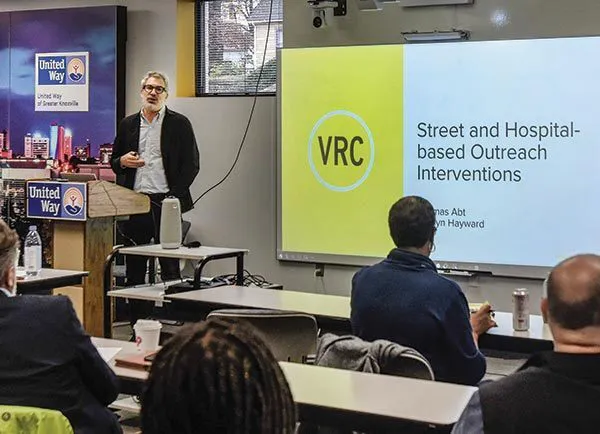
“The single most reliable indicator about whether someone’s going to be involved in violence or whether violence is going to happen in a certain place is whether it’s happened in the past,” Abt says.
He bases his approach on three principles: focus, balance and fairness. First, he says, law enforcement and city services should be concentrated where crime occurs most and the narrow subset of people responsible for the worst offenses. They’re who criminologist Lawrence Sherman, a UMD distinguished university professor, calls “the power few.”
Taken too far, this risks the problems New York City had with “stop and frisk” policing, in which 90% of those stopped by the NYPD from 2003 to 2021 were people of color. Baltimore experienced what critics say were similar excesses during former Maryland Gov. Martin O’Malley’s mayoral tenure, when he approved widespread arrests for minor offenses like loitering.
Abt says law enforcement can avoid discriminatory overpolicing in part by working with community members to determine who in the neighborhood poses a true threat. “You go to these neighborhoods, and people will tell you who is doing what—but only if they trust you,” says Abt. That’s far different, he says, from an approach that treats every person of color or inhabitant of certain neighborhoods like a suspect.
Abt’s second tenet is balance, or “the notion that balancing prevention and punishment works far better than either approach in isolation.” Street outreach workers who locate suspected members of the power few might try to connect them with therapy, get them involved in community programs or direct them to housing or job assistance. “You need to target services and support to some of the supposedly least sympathetic people,” says Abt.
Finally, fairness—or legitimacy—is the linchpin in assuring that these interventions work according to plan. The impact of laws must be “felt equally across social groups,” Abt writes; they must be enforced “according to widely accepted values, including transparency, impartiality, proportionality and equality.”
These concepts and conclusions from the data led Abt and his team to make a number of recommendations to the city in fall 2022. A few months later, the city is “under construction with a new way of policing,” Knoxville Deputy Police Chief Tony Willis says. “What we want is our officers to get a call, and it’s no longer 12 Cherry Street. It’s the Smith house.”
BORN AND RAISED in Cambridge, Mass., Abt was exposed early to the idea of using data to address social problems by his father, Clark Abt, an MIT-trained researcher whose social science think tank, Abt Associates, takes on issues like public health, education and economic mobility.
Abt’s interest in violence reduction was fueled by his own close-to-home shock. In 1999, while attending Georgetown University Law Center, he taught a class at a local high school. One student “sat in the back, was extremely disconnected, often slept through major portions of class,” he recalls. Gradually, as Abt worked to engage him, he became more responsive. One of Abt’s mentees from the program later asked if he’d heard about the kid in the back of the class: He’d been murdered.
Years later, as he began writing “Bleeding Out,” Abt searched unsuccessfully for details. “I contacted the homeroom teacher. He was like, ‘Thomas, I can’t tell you how many students I’ve lost. There’s just no way I could possibly pick this one out among all the others.’”
Abt went on to examine this problem of violence from the perspective of a teacher, a prosecutor, a government official and an academic. After law school, he worked as an assistant district attorney in New York County, followed by time at a law firm and as voter program director for the 2008 Obama presidential campaign. Post-election, Abt joined the Department of Justice as chief of staff to Assistant Attorney General Laurie O. Robinson, who prioritized “bringing sound science and reliable data into the criminal justice decision-making process,” he says.
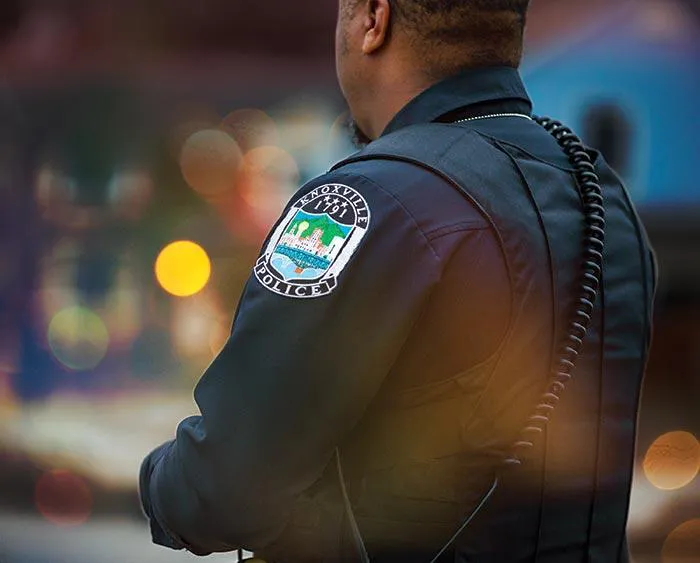
Robinson calls Abt “somebody who can cross those lines and bring important knowledge from research into the world of hard decisions on the practical side.” He would demonstrate that as New York’s deputy secretary for public safety, where he initiated the Gun Involved Violence Elimination (GIVE) program, and later in a five-year fellowship at Harvard, when he wrote “Bleeding Out.”
Critics like Jeffrey Butts, director of the Research and Evaluation Center at the John Jay College of Criminal Justice, say Abt’s philosophy takes a fast-action approach to problems with deep roots, potentially neglecting “people who talk about fundamental causes and long-term solutions,” he told The Atlantic in 2019.
Abt agrees systemic approaches like reducing poverty, improving education and creating job opportunities are all essential, but says that unlike preventing shootings—“as a matter of practical reality, those things are not achievable in the near future.”
Two things primarily separate the VRC from other centers focused on gun violence: its all-hands approach, which incorporates a spectrum of ideas on enforcement and prevention; and its work with elected leaders and grassroots activists at no cost to implement new methods and ideas.
Abt is “uniquely qualified to help lead this effort and also to coordinate other initiatives at the university that are centered around violence research,” says Rod K. Brunson, interim chair of the Department of Criminology and Criminal Justice and senior policy adviser to the VRC. He is “one of the thought leaders in this space.”
DOWN SECLUDED Adcock Avenue in Knoxville, Wiesenberg points out a low-slung house where he used to drop off basketball buddies after school. In April 2020, Anthony Sanford, one of them, was killed here, shot in the back in what appeared to start as a drug deal.
Later that night, Wiesenberg, an officer on the Community Engagement Response Team (CERT), got a call saying that neighbors and witnesses were stonewalling investigators, but that “there are some people up here that are name-dropping you.” Wiesenberg went to the house alone and gleaned information that eventually led to the arrest of a suspect.
That kind of relationship is essential to CERT, a unit that focuses exclusively on violent crimes with the kind of community-first policing Abt encourages. Each night, CERT officers walk through neighborhoods, asking residents how things are going. An anonymous tip line also lets citizens text officers.
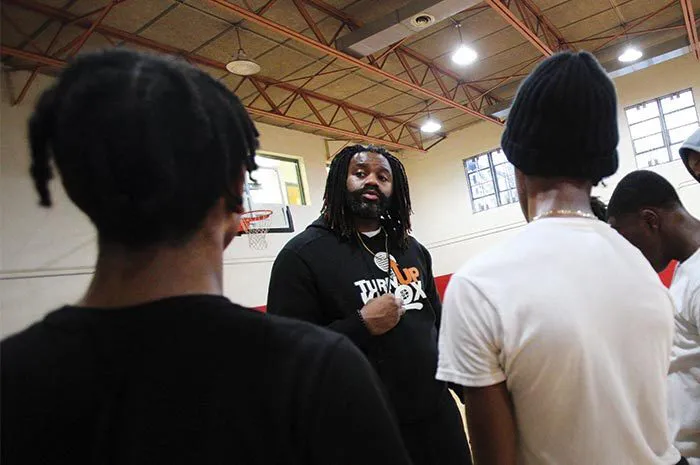
Denzel Grant represents another branch of the violence reduction ecosystem. As leader of the violence interrupter program Turn Up Knox, Grant works with kids at risk and adults who have actually committed violent offenses, offering programming, mentorship and resources for help finding a job or place to live.
Grant saw violence at an early age. In 1998, his cousin, Andre Stenson, was pulled over for driving without headlights. On parole and driving without a license, he ran from police, who wrestled him to the ground and handcuffed him. He died on the way to the hospital, after saying that he couldn’t breathe. (A federal jury later ruled in favor of the officers in a lawsuit.)
“I always had the passion for (community work) ever since,” says Grant, who was in elementary school at the time. “I’ve just been doing it ever since.”
Grant has made unexpected connections. “We have become pretty good friends,” says Deputy Police Chief Willis, “and I would not have bet one dime on that occurring.” But Grant has become “a powerful partner” in helping police de-escalate potentially volatile situations.
Knoxville native LaKenya Middlebrook is responsible for ensuring these disparate elements cohere. In 2021, the mayor appointed Middlebrook director of community safety, a role in which she links citizens, law enforcement, civilian oversight committees and school districts to implement Abt’s recommendations.
Gun violence is “an issue that is so front-of-mind and so deeply personal for so many folks in our community that people want to help,” says Middlebrook. “They want to be a part, they want to figure out what role they can play, they are really open to thinking about how we can do things a little differently.”
Much of Turn Up Knox’s youth programming takes place at the YWCA. At the ceremony commemorating Nana Muhammad’s death, Grant, Middlebrook and others held their balloons as Nana’s father, Lawrence, talked about his daughter. “She’s that tree where all the seeds fall off and other plants grow,” he said.
Afterward, those gathered released their balloons and watched them soar, far beyond where any tree could snag them.
UMD Researchers Lead 120 Initiative on Gun Violence Reduction
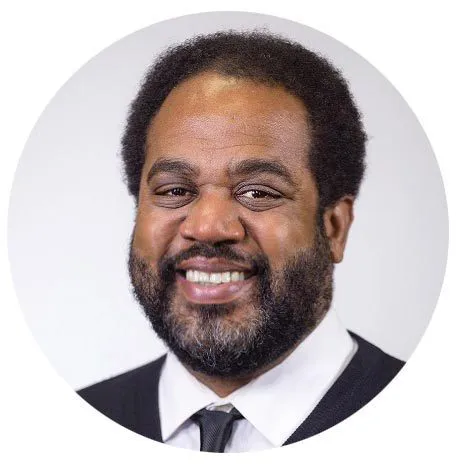
Other University of Maryland researchers are tackling the problem of gun violence with a variety of approaches. Joseph Richardson Jr., the Joel and Kim Feller Professor of African American Studies and Anthropology, and Rod K. Brunson, interim criminology and criminal justice chair and professor, are groundbreakers in the field of violence reduction.
Their work is part of the 120 Initiative to Reduce Gun Violence—a D.C.-area coalition of higher education institutions founded by UMD President Darryll J. Pines and George Mason University President Gregory Washington to focus research expertise at the problem. (Its name honors the number of people who die on average daily from shootings in the U.S.)
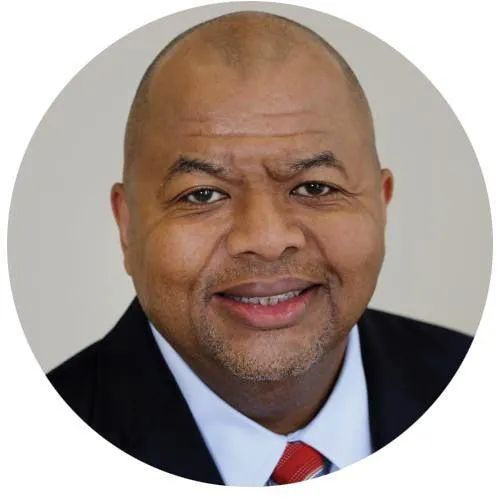
Richardson (above right) pioneered an intervention strategy that begins as soon as gunshot victims are wheeled into the emergency room. He talks with patients in their hospital beds, learning their stories and beginning the process of connecting them with resources like legal aid or mental health counseling.
Brunson’s (right) work focuses primarily on the relationship between law enforcement and the community. His most recent study examined how place-based factors influence the decisions law enforcement officers make.
For details on the 120 Initiative’s new recommendations, visit go.umd.edu/120InitiativePaper.
This story is featured on the cover of the Spring 2023 issue of Terp magazine. Find all the stories online at terp.umd.edu.
